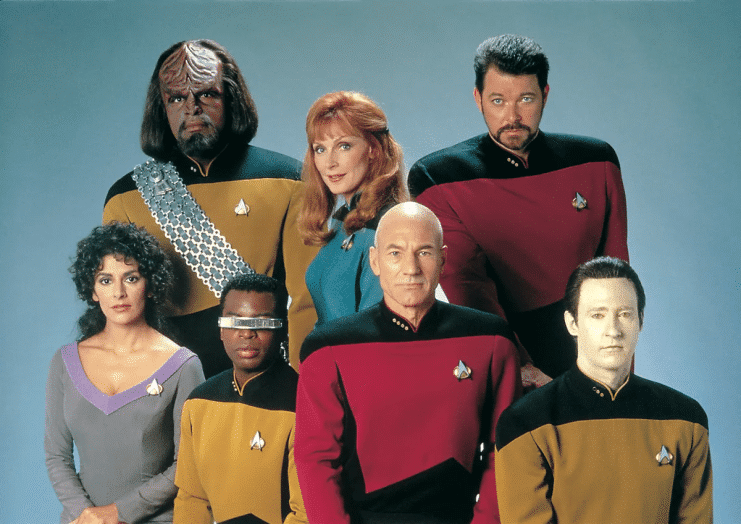
We revisit the color changes in Starfleet uniforms that define eras and roles in the Trekkie universe.
Have you ever wondered why the vibrant red of an officer’s shirt can seal their fate in Star Trek, or why blue often denotes scientific wisdom? Since the series’ inception, Starfleet uniforms have served more than just functional differentiation; they’ve also evolved to fit the aesthetic and narrative needs of each era. We reveal the meaning behind these changes and what they say about the future of the franchise.
From the original pilots to the golden age of uniforms
In the unaired early days of Star Trek, clothing was limited to two colors: blue for science and medicine, and gold for everything else. This scheme was maintained for budgetary reasons until “Where No Man Has Gone Before,” the successful pilot, laid the groundwork for the visual style that would dominate between 1966 and 1969. However, it was the adoption of red, along with gold and blue, that marked a milestone in the series’ aesthetic.
Each costume designer brought his or her own unique vision, which explains the variability of the color palette over the years. For example, in the 1990s, Robert Blackman reinterpreted William Ware Theiss’s original designs for the new Star Trek installments, respecting the new color meanings established.
The Evolution of Colors and Their Meaning
Gold originally signaled command and navigation, while blue remained associated with science and medicine. However, at the turn of the century, and particularly in “Star Trek: The Next Generation,” an interesting shift occurred: red came to represent command, with figures such as Captain Picard and Commander Riker wearing the color. This left gold to denote operational and engineering roles, distancing itself from the infamous stigma of “red shirts,” those destined not to return from missions.

As Star Trek entered the 21st century, shows like “Picard” and “Lower Decks” retained TNG’s color designations, despite introducing design variations. This demonstrates a respect for visual consistency over the decades, adapting to new times with uniforms that mixed solid colors with distinctive details.
Beyond functionality
In Star Trekevery change in uniform design was an opportunity to further explore the psyche and society of his vast universe. Take, for example, the Captain Picardwhose red clothes not only symbolized his leadership role, but also reflected his energetic and diplomatic nature. This use of color not only has a visual impact, but deepens the narrative, giving the characters an added dimension without the need for explanatory dialogue.
Comparatively, in other franchises like Star Wars the Galactic BattleWhile the uniforms are also iconic, they tend to remain static, reflecting a more rigid structure of their universes. Star Trek distinguishes itself by adapting its uniforms not only to the aesthetic needs, but also to the thematic and tonal changes of each series, reflecting its focus on evolution and adaptability. This constant visual evolution helps keep the series fresh and relevant, resonating with each new generation of fans.
The Future and the Return to Contrasting Colors
In the distant future of “Star Trek: Discovery,” the gray uniform with a colored stripe echoes the conflict of “Deep Space Nine.” This aesthetic choice not only reflects narrative tensions, but also emphasizes Starfleet’s adaptability to the challenges it faces, while maintaining the tradition of the basic colors even a thousand years from now.

We can’t forget the uniforms, which range from Spock’s blue tones in the original series to the elegant purple and gray suits of the 32nd century. These uniforms not only serve a ceremonial function, but also reflect the evolution of Starfleet fashion, which combines tradition and modernity.